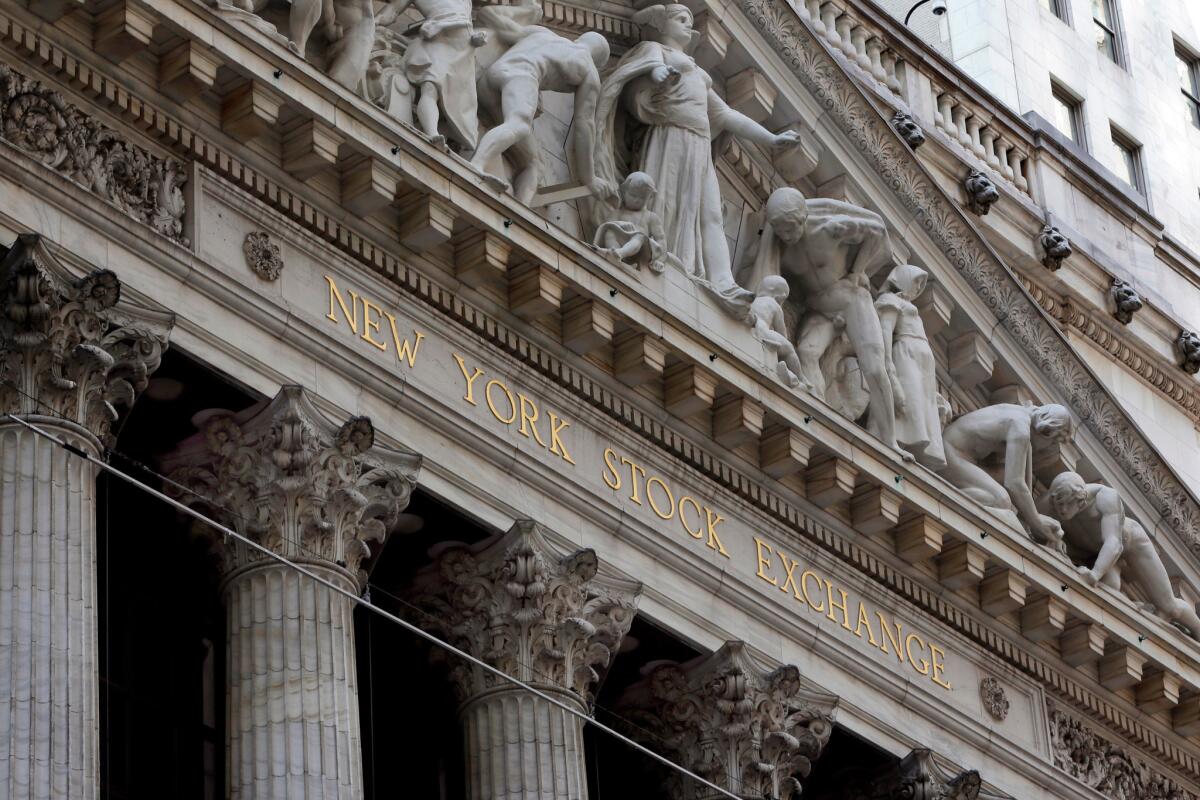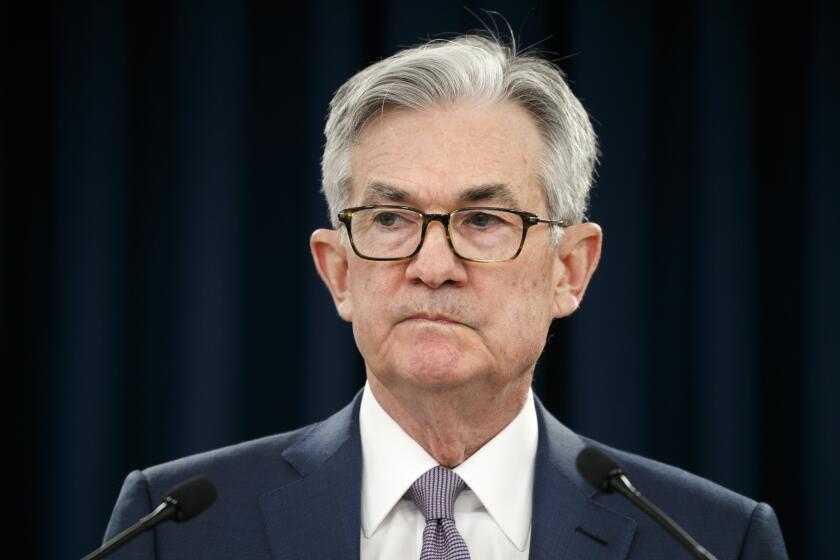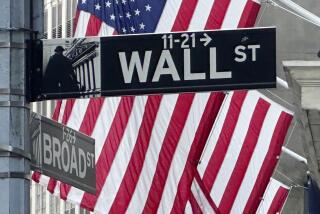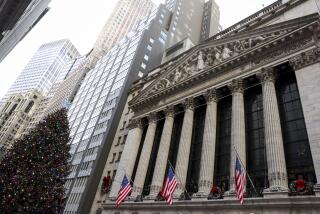U.S. stock futures tumble 5% despite Federal Reserve’s moves

- Share via
U.S. stock futures tumbled Sunday, wiping out half of Friday’s furious rally and triggering “limit” rules that don’t let index futures decline more than 5%, as investors worried that emergency measures by the Federal Reserve will not sufficiently cushion the coronavirus pandemic‘s blows to the economy.
The “limit” levels act as a floor for buying until regular trading begins. Futures trading isn’t halted: Investors can bid higher than the limit, just not below it.
Contracts on the Standard & Poor’s 500 index, whose violent swings have now triggered limits in five of the last six sessions, were down 4.8% shortly after 4 p.m. Pacific time. Contracts on the Dow Jones industrial average were down 4.5%, or more than 1,000 points.
On Sunday the central bank cut interest rates by a full percentage point, to near zero, and said it will boost its bond holdings by $700 billion. U.S. equities are coming off their first back-to-back 9% swings since the Great Depression as investors try to price the effect of a global pandemic.
The Fed slashed its benchmark interest rate by a full percentage point to nearly zero and as the CDC recommended canceling all gatherings of more than 50 people.
Investors remain rattled by the virus and its potential to derail global growth. Goldman Sachs cut its growth forecasts, Nike closed stores in North America, and Apple shut all stores outside of China.
“It won’t be enough in the grand scheme of things,” said Jeff Mills, chief investment officer of Bryn Mawr Trust. “We need large fiscal programs, which, based on the recent communication from the Treasury secretary, it seems clear we will be getting.”
The extreme volatility of recent sessions makes it difficult to consider futures a perfect litmus for grading the Fed’s response. Contracts bounced between exchange-enforced volatility limits throughout last week, and Friday saw the biggest U.S. stock market rally in 12 years. That surge may have been attributable in part to expectations that the Fed would act over the weekend.
Similar turbulence has gripped markets around the world as the coronavirus threatens to plunge the global economy into recession. Gauges of stock swings hit levels last seen in the 2008 financial crisis, and on Thursday and Friday the S&P 500 notched back-to-back 9% moves for the first time since the 1930s.
“What a roller-coaster ride this is turning out to be,” Erik Nielsen, group chief economist at UniCredit, wrote in a note. “I never thought I would see such volatility, intra-day moves and general dislocations again in highly developed markets.”
The S&P 500 jumped more than 5 percentage points in the final 30 minutes of trading Friday to cap a 9% rally that was the biggest in more than a decade. The leap was spurred by Trump declaring a national emergency and outlining measures to support the economy.
The coronavirus has infected more than 3,000 Americans and has ground activity in Europe to a virtual standstill.
“‘There will be an economic impact,” said Megan Horneman, director of portfolio strategy at Verdence Capital Advisors. “We won’t know what that is until we see the data.”
An uneven response from politicians has rattled investors trying to figure out how to value companies whose earnings forecasts have become useless. Nike Inc. closed all its stores in North America and Western Europe on Sunday, and Apple Inc. shut its stores everywhere but China until March 27.
U.S. economic growth is forecast to nearly halt in the second quarter and recession odds have jumped, Bloomberg’s March 6-12 survey of economists shows.
“The inherent uncertainties stemming from the spreading of the virus were multiplied many times over by some dreadful policy communication, but also tempered by a series of outstanding policy measures, including actions by central banks and fiscal authorities,” UniCredit’s Nielsen said.
The S&P 500 averaged a move of 7.2% last week in the most volatile period since 2008. Stocks dropped 9.5% Thursday and rose 9.3% Friday, in the first such reversal since the Great Depression.
“We tend, in the midst of bear markets, in these crises, to see big, big swings like this, both on the downside and the upside,” said Jennifer Ellison, principal at San Francisco wealth-advisory firm BOS. “We get this self-fulfilling prophecy. When markets are down and they start to spiral, everybody wants to run for the exits. And then they think they missed out on the bottom and they run back in.”
More to Read
Inside the business of entertainment
The Wide Shot brings you news, analysis and insights on everything from streaming wars to production — and what it all means for the future.
You may occasionally receive promotional content from the Los Angeles Times.











